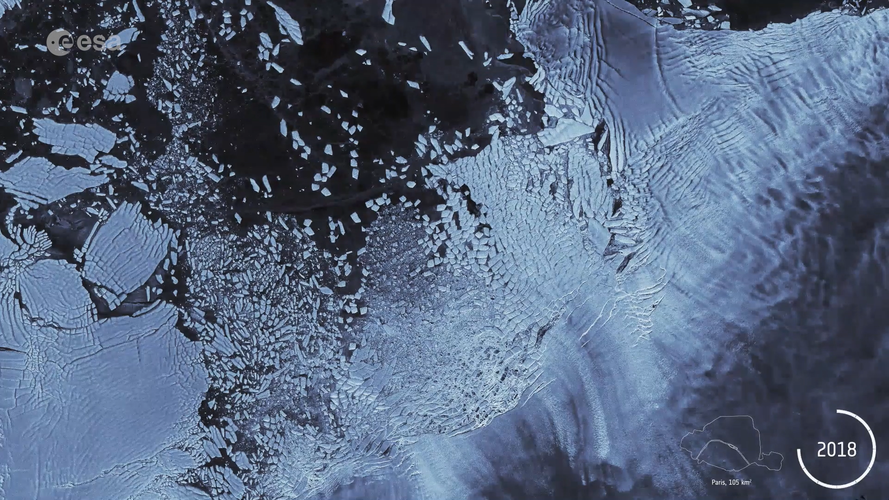
The animation, which shows the discharge of chunks of ice into the ocean from the Thwaites Glacier Ice Tongue in West Antarctica, uses images captured by the Copernicus Sentinel-1 mission between 14 June 2017 and 7 July 2019. Thwaites is a particularly important part of the Antarctic Ice Sheet because it holds enough ice to raise global sea levels by around 60 cm and is considered by many to be at risk of rapid retreat, threatening coastal communities around the world. Recently, scientists have developed a new Artificial Intelligence, or AI, technique using radar images such as these, to reveal how the Thwaites Glacier Ice Tongue is being damaged by squeezing and stretching as it flows from the middle of the continent to the coast. Being able to track fractures and crevasses in the ice beneath the overlying snow is key to better predicting the fate of floating ice tongues under climate change.
Read full story: Sentinel-1 and AI uncover glacier crevasses
Click here for original story, Thwaites flow
Source: ESA Top Multimedia